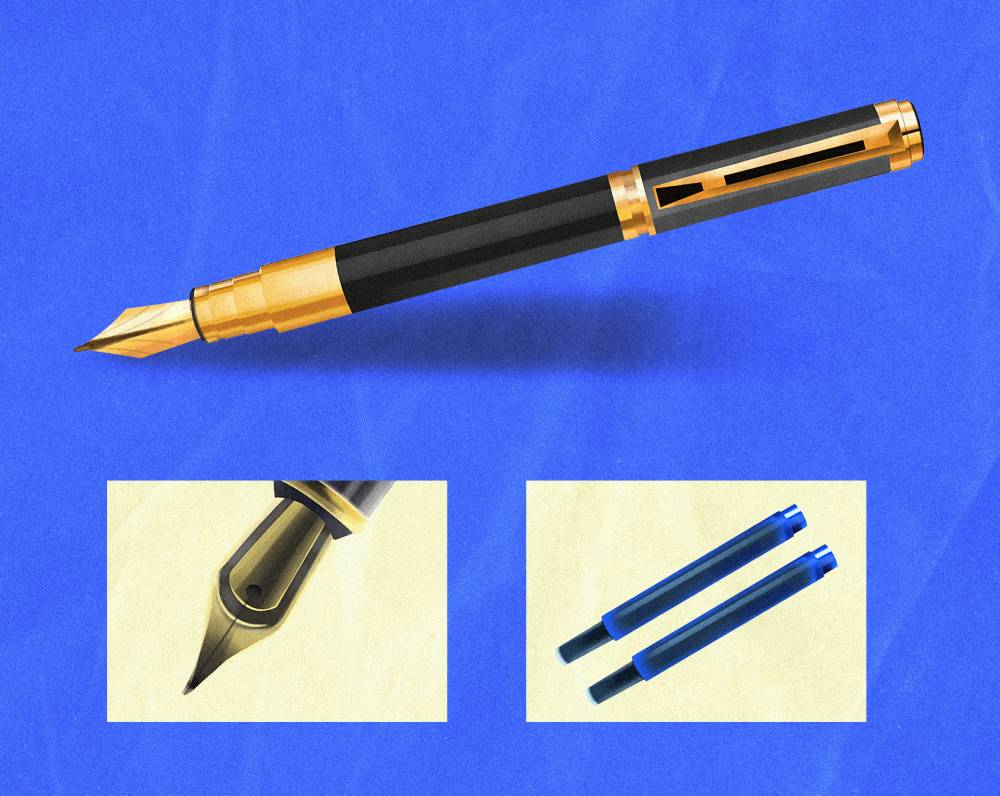Romanticizing everyday writing with fine pens

There’s a different kind of comfort in things analog—like pen on paper, the feeling of leafing through pages, and fingers being able to brush over the strokes of words written on the page.
The fact that you’re reading this on paper is perhaps also proof of this preference for the tactile; after all, we humans are beings who inherently place value on things we can hold, psychology studies say.
Analog (or alternatively called “cozy”) hobbies have also been experiencing a resurgence in recent years. Aside from hobbies like crafting, embroidery, and knitting, other expressive arts like calligraphy and journaling have been on the rise. Likely to push back against the growing digital fatigue, but also thanks to the growing awareness of these hobbies as effective acts of self-care.
Admittedly, I still prefer writing things by hand (I wrote the rough draft of this story in a notebook before committing to completing it on my laptop); and as a lover of all things paper, popping into a stationery store—whether here in Manila or on my trips abroad—is a must. In fact, my first encounter with fountain pens came through a random stationery store visit.
Years ago, my knowledge of fountain pens has always just been in media, but never in common sight. Back then, it seemed so inaccessible… until I saw a whole bundle at a store in a mall. It looked like any regular pen I’d find at a regular office supply store—encased in clear plastic—the only difference was that it had a silver, stainless steel nib. What surprised me most was that it was only roughly P300—a far cry from my expectations that all fountain pens would cost a fortune. I haven’t looked back since. (Plus, there’s just some sort of magic that makes my handwriting nicer when using a nice pen. I know I’m not alone in this!)
There’s a growing community of fountain pen enthusiasts in the country—thousands come together annually to see, experience, buy, and really just celebrate all things fountain pen-related. A friend took me to this pen show once, and it was packed!
If you’ve been curious about trying fountain pens but unsure where to start, here’s a quick guide.
Beginner-friendly pens
Platinum Preppy (~P300)
This is a great starter pen, thanks to its unintimidating design. Once the ink runs out, you can just swap its ink cartridge, much like a regular pen.
Muji Fountain Pen (~P295)
Also in the same price range as the Platinum Preppy, Muji’s version of the fountain pen is fuss-free in both features and aesthetic.
Pilot Kakuno (~P699)
The Pilot Kakuno has design features that can help beginner fountain pen users to more easily acquaint themselves with the pen. Its grip has a triangular shape that helps with a more natural, correct grip. The design also prevents the pen from rolling off your desk (God forbid we drop a fountain pen!).
Kaweco Sport (starts at ~P1,195)
A classic, the Kaweco Sport is also among one of the most recommended beginner fountain pens. It’s compact, and comes in a variety of body materials (the price thus ranges depending on the type of material).
Sailor Lecoule (~P1,595)
The Sailor Lecoule bears a more classic feel, but at the same time, is lightweight and compact, making it beginner-friendly. You can use both cartridges or converters with the Lecoule.
Lamy Safari (~P1,649)
It’s easy to identify the Lamy Safari, thanks to its unique, modern design. Its key features are the ink window and spring-action metal clip. What also makes the Safari popular especially among younger fountain pen users is its variety of bright, vivid colorways. Lamy also comes out with special edition colors annually.
Writing
While it may seem intimidating at first, writing with fountain pens isn’t too different from your usual ballpoint pen.
Hold the pen the same way you’d normally hold any writing implement; feel free to use your preferred grip style.
Keep the nib facing up and angled 45 degrees to the paper.
Avoid putting excess pressure on the pen as this might damage the nib, or cause too much ink to flow out.
The language of fountain pens
Shopping for your first fountain pen might seem intimidating if you’re barraged with a slew of jargon. Here are some common terms you might find (aka features you might want to consider):
Nib – the metal tip of the fountain pen. Different nib sizes produce varying thickness of ink when writing. For everyday writing, EF, F, or MF (extra fine, fine, or medium-fine) are common nib sizes.
Cartridge – typically plastic, contains ink. This is a more convenient way of filling up a fountain pen. Once the ink runs out, just discard the cartridge and pop in a new one.
Converter – a small, screw-piston type mechanism that can be filled with ink. You can use this instead of cartridges, if you want to use brands of ink beyond that of the penmaker’s.
Shading – a quality of fountain pen ink where you see variance in color and saturation when writing.
Feathering – when ink spreads through the paper fibers, resulting in web-like edges in your writing. Choosing fountain pen-friendly paper can help avoid this.
Bleedthrough – when ink bleeds through the other side of the paper

















